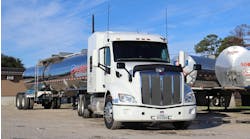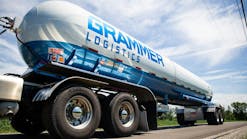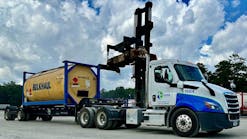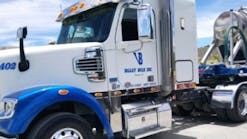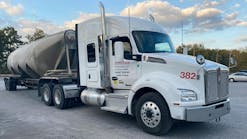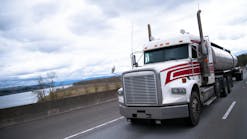OSHA targeting wash rack confined space entry programs for tougher enforcement
TANK TRUCK wash racks are coming under greater scrutiny from the Occupational Safety and Health Administration (OSHA), and confined-space tank entry seems to be the principal reason. The increased attention could be costly for many tank cleaning facilities.
This warning of a more aggressive stance at OSHA was delivered during an update on confined space entry issues that was delivered at the National Tank Truck Carriers Tank Cleaning & Environmental Council Seminar April 4 and 5 in Austin, Texas. The update was presented by Marcel Debruge, Burr & Forman LLP, and Randy McGough, Ball & McGough Engineering Inc.
“This industry has become a target for OSHA regulatory enforcement,” Debruge said. “OSHA seems to have a black list of industry sectors that are believed to need stricter enforcement, and tank cleaning would appear to be on that list for confined space entry.
“We get the sense that OSHA officials believe most wash racks are unsafe, that they have poor confined space entry programs, and that their employees are exposed to dangerous materials. Emboldened by the Obama Administration, OSHA wants to make examples of wash racks under the severe violator enforcement program. The confined space entry rules provide a seemingly unending list of potential violations.”
The main reason is the incredible complexity of OSHA's full permit-required confined space entry regulation — the rule on which most wash racks base their confined-space entry programs. Debruge and McGough suggested that other options might be better.
“Wash racks need to consider alternative confined space entry programs that are allowed under the OSHA regulation,” Debruge said. “Very few wash racks currently use these optional approaches. However, the rules under these programs can be less cumbersome if atmosphere is the only hazard.”
Options include alternate confined space entry and reclassification of confined space. Under OSHA rules, alternate tank entry programs are allowed as long as the employer can demonstrate that the only hazard posed by the permit space is an actual or potential hazardous atmosphere and that continuous forced air ventilation alone is sufficient to maintain that permit space safe for entry. Wash rack operators can reclassify tanks as non-permit confined space under the following procedures: The confined space poses no actual or potential atmospheric hazards and all hazards within the space are eliminated without entry into the confined space.
Both speakers stressed that it is critical for wash rack operators to thoroughly document the reasons and justification for choosing an alternate confined space entry program. The process is not for the careless or faint-hearted, but the end result can be very rewarding.
“You will have to do a lot of testing and documentation, but it can be worthwhile,” McGough said. “The documentation will have to state clearly that you are using an OSHA alternate tank entry program. You have to verify safe entry, and that will require more than just using a “sniffer,” which OSHA doesn't trust anyway. With any confined space program, you need to be able to verify safe entry.
“In our work for a wash rack operator, we did extensive tank trailer atmosphere testing. However, we grouped related products so we would not have to do individual tests on every single chemical. We looked at how a chemical reacts to washing procedures. Did the chemical change form? We tested for oxygen levels, volatile organic compounds, lower explosion limits, and such. We looked at specific chemicals of concern (COCs). We did tank atmosphere testing pre-wash and post-wash.”
Testing was done over several months in 1996 and 1997 with tank trailers that had contained various chemical groups, including organics, inorganics (acids/caustics), alcohols, and pesticides. Post-wash testing showed normal oxygen levels (20.8% to 20.9%), zero detection of lower explosion level (LEL), zero detection of volatile organic compounds, no chemical levels above their PELs, no toxicity detection, and no atmospheric hazards.
“Our testing results demonstrated conclusively that post-wash tank trailers were not permit-required confined spaces, McGough said. “We were also able to demonstrate conclusively that interior atmospheric conditions of these clean tanks did not change during tank entry and work performance. Average interior work time was 20 minutes.
“Testing proved the effectiveness of the wash process to yield tank trailers clean for the next chemical to be hauled and for tank entry as required for inspection or hand labor. The local OSHA office accepted our testing protocol and test results.”
McGough recommended keeping wash rack workers out of dirty tanks if at all possible. A tank entry program for clean tanks will be much easier to defend with OSHA. He added that a tank can be designated as clean even if it contains inert product residue after cleaning.
Tank cleaning companies with multiple locations need to develop a tank entry program with systemwide standardization for procedures and documentation. OSHA is focused on companywide enforcement, and non-standardized tank entry programs will draw unwelcome scrutiny, according to Debruge. ♦
<< View more NTTC seminar coverage
View more NTTC seminar coverage >>
